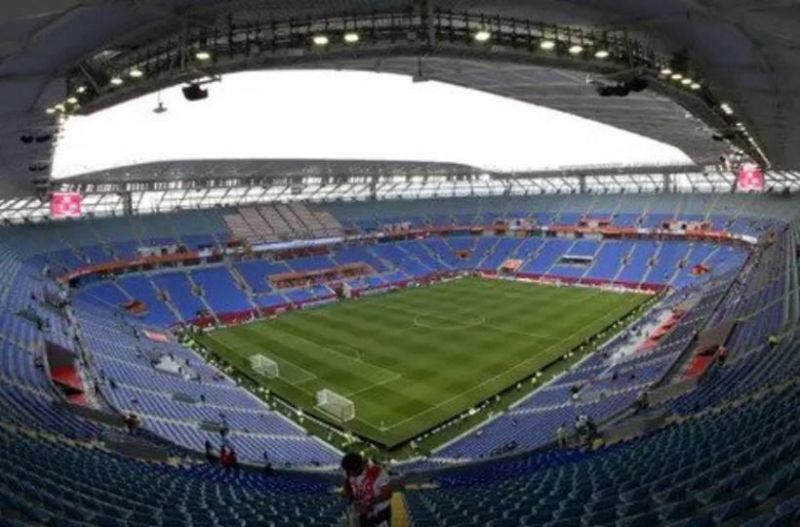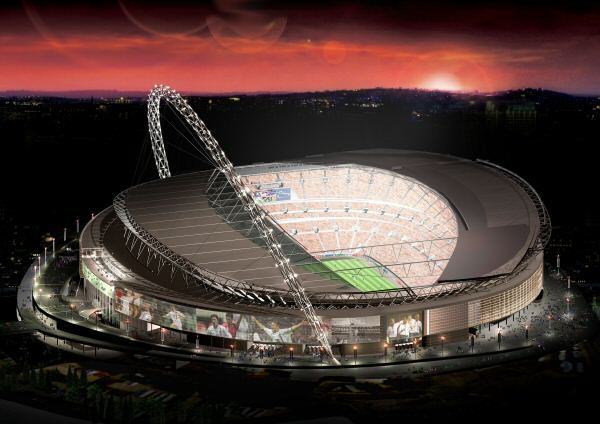The future of football stadiums is constantly evolving and changing in structure. Let's take a look.

what is a football stadium?
A football stadium is a large sports venue designed to host football (soccer) matches. It is the primary location where football matches take place, serving as the home ground for a particular team or hosting matches between different teams.
Football stadiums typically feature an open-air playing field surrounded by seating areas for spectators. The size and capacity of a stadium can vary widely, ranging from smaller venues that can accommodate a few thousand spectators to larger stadiums capable of holding tens of thousands or even hundreds of thousands of fans.
Key components of a football stadium include:
- Pitch: The playing field where the football match takes place. It consists of a rectangular area with marked boundaries and is typically made of natural or artificial grass.
- Seating: Stadiums offer seating areas for spectators to watch the matches. These seats can be arranged in different configurations, including stands, tiers, and boxes, to accommodate varying capacities and provide optimal views of the action.
- Stands and Terraces: The stands are elevated sections that provide seating for spectators, usually surrounding three sides of the pitch. In some traditional stadiums, terraces or standing areas may still exist, although they have become less common in modern stadium designs due to safety regulations.
- Facilities: Football stadiums are equipped with various facilities to enhance the matchday experience for spectators. These may include concession stands, food and beverage outlets, restrooms, medical facilities, hospitality suites, and VIP areas.
- Media Areas: Stadiums often have dedicated areas for media personnel, including press boxes, broadcast booths, interview rooms, and mixed zones where players and coaches interact with journalists after matches.
- Safety Measures: Safety is a crucial aspect of modern stadiums. They incorporate features such as crowd control measures, security checkpoints, CCTV surveillance systems, and emergency exits to ensure the well-being of spectators.
Football stadiums serve as more than just venues for matches; they hold significant cultural and emotional value for fans. They create an electric atmosphere where supporters can come together to cheer on their favorite teams and create lifelong memories.
Football stadiums have long been the sacred grounds where fans gather to witness the beautiful game. However, as technology advances and fan expectations evolve, stadiums are undergoing a transformation to provide innovative designs and enhanced experiences. From architectural marvels to immersive technologies, the future of football stadiums promises to revolutionize how fans engage with the sport.
In this article, we explore the exciting developments and trends shaping the future of football stadiums, placing emphasis on innovative designs and fan experiences.

- Futuristic Architecture: The future stadiums are breaking away from traditional designs, embracing avant-garde architecture that reflects the spirit of the sport. Iconic structures like the Al Wakrah Stadium in Qatar for the 2022 FIFA World Cup showcase cutting-edge designs inspired by the region's culture and heritage. These futuristic stadiums aim to create visually striking landmarks while providing state-of-the-art facilities for spectators.
- Sustainable and Eco-Friendly Features: With increasing concerns about environmental impact, future stadiums are incorporating sustainable features. Green building practices, renewable energy sources, rainwater harvesting, and efficient waste management systems are being integrated to minimize the ecological footprint. Additionally, sustainable transportation options, such as improved public transit connectivity and bicycle infrastructure, are being prioritized to reduce carbon emissions associated with matchday travel.
- Enhanced Fan Experiences: The future of football stadiums revolves around creating immersive experiences for fans. Technologies such as augmented reality (AR) and virtual reality (VR) are being utilized to offer interactive experiences, allowing fans to explore the stadium virtually, access behind-the-scenes content, and even participate in simulated matchday activities. Personalized mobile apps and digital platforms enable fans to customize their matchday experience, including seat selection, food ordering, and real-time statistics.
- Connectivity and Smart Stadiums: Integrating cutting-edge technologies transforms stadiums into smart venues. High-speed Wi-Fi, wireless charging stations, and advanced connectivity enable fans to share their experiences on social media platforms, enhancing engagement and creating a vibrant digital community. Smart stadium features include intelligent crowd management systems, real-time security monitoring, and data analytics to improve safety and optimize operations.
- Multi-Purpose Venues: Future stadiums are being designed as multi-purpose venues to maximize utility and revenue generation. Flexibility in seating configurations and retractable pitches allow stadiums to host not only football matches but also concerts, cultural events, and other sporting competitions. By catering to diverse audiences, these stadiums become hubs of entertainment and contribute to the economic growth of the surrounding areas.
- Interactive Fan Zones: Future stadiums are incorporating interactive fan zones and entertainment areas within the venue. These zones provide opportunities for fans to engage in pre-match activities, enjoy live music performances, participate in interactive games, and explore interactive exhibits celebrating the club's history and achievements. These immersive experiences add a festive atmosphere and create lasting memories for fans beyond the 90 minutes on the pitch.
- Personalized Fan Services: Advancements in technology are enabling stadiums to offer customized services tailored to individual fans. Facial recognition technology and smart ticketing systems allow for seamless entry into the stadium, while personalized recommendations for food, merchandise, and seating preferences enhance the overall matchday experience. Additionally, AI-powered chatbots and mobile apps provide instant assistance and information, ensuring fans have a smooth and enjoyable experience from arrival to departure.
- Sustainable Infrastructure Integration: Future stadiums are integrating sustainability beyond their immediate boundaries. They are becoming part of larger sustainable urban development initiatives, incorporating green spaces, public transportation hubs, and cycling infrastructure. By considering the stadium's impact on the surrounding environment, these venues contribute to the overall sustainability and livability of the cities they inhabit.
- Dynamic and Adaptive Lighting: Lighting plays a crucial role in creating the right atmosphere within stadiums. Future stadiums are incorporating dynamic lighting systems that can adapt to different moments during matches, enhancing the overall experience. From vibrant and colorful displays during goal celebrations to subtle lighting for moments of reflection, adaptive lighting technology adds an extra layer of excitement and visual spectacle for fans.
- Fan Integration through Digital Platforms: Digital platforms are evolving to foster deeper connections between fans and their favorite teams. Virtual fan communities, online forums, and social media integration allow supporters to engage with each other, share their passion, and connect with players and club representatives. The future of football stadiums will embrace these digital platforms, extending the matchday experience beyond the physical confines of the venue and creating a global community of fans.
Also read: Football's Greatest Managers: Examining The Minds Behind Successful Teams
In conclusion, the future of football stadiums promises a fusion of architectural innovation, sustainability, enhanced fan experiences, sustainable practices, immersive technologies, connectivity, and multi-purpose functionalities. From futuristic architectural designs to immersive technologies, enhanced connectivity, and personalized services, these stadiums are redefining how fans interact with the sport.
Also read: From The Pitch To The Silver Screen: Memorable Football Movies And Documentaries
As the football industry continues to innovate and adapt to changing fan expectations, stadiums will serve as epicenters of entertainment, fostering a sense of belonging and shared experiences for supporters worldwide. They are revolutionizing the way fans engage with the sport. As the football industry continues to evolve, stadiums will evolve as well, adapting to new trends and technologies to offer memorable experiences for fans and elevate the overall excitement and passion that the game brings.

